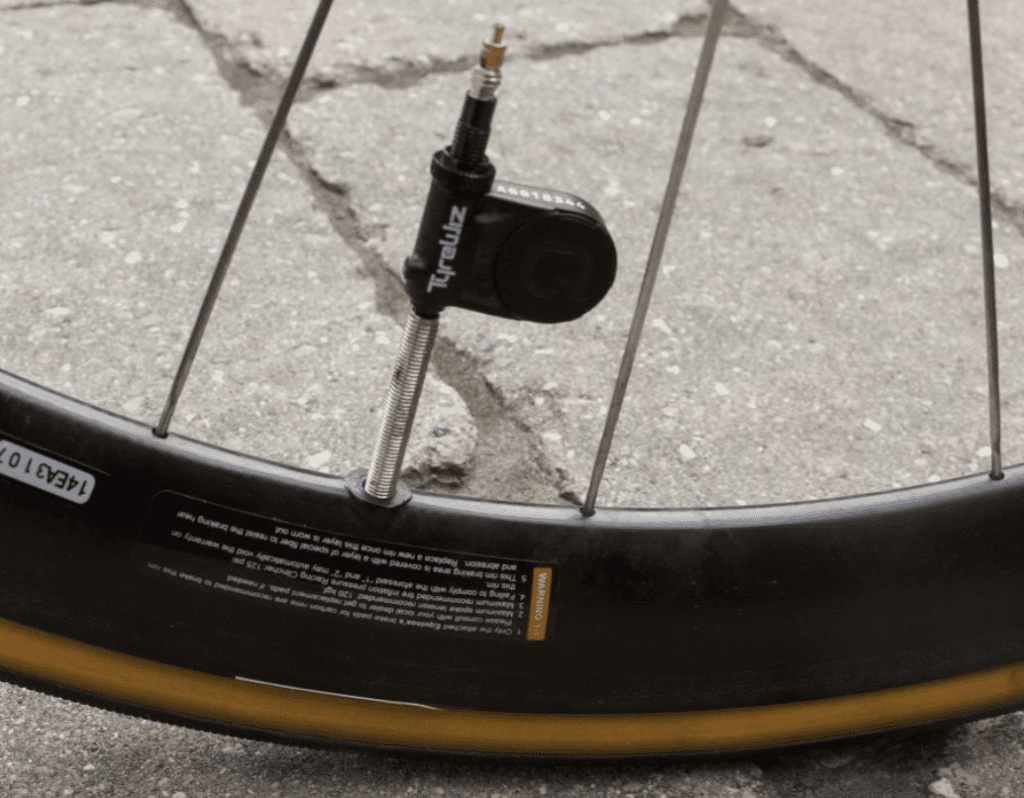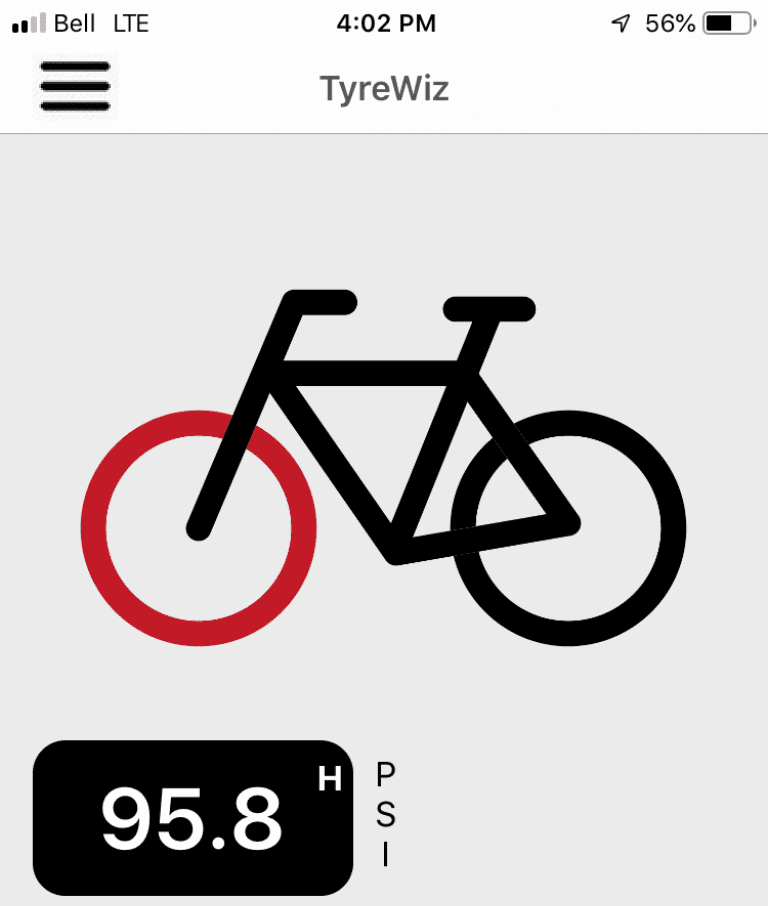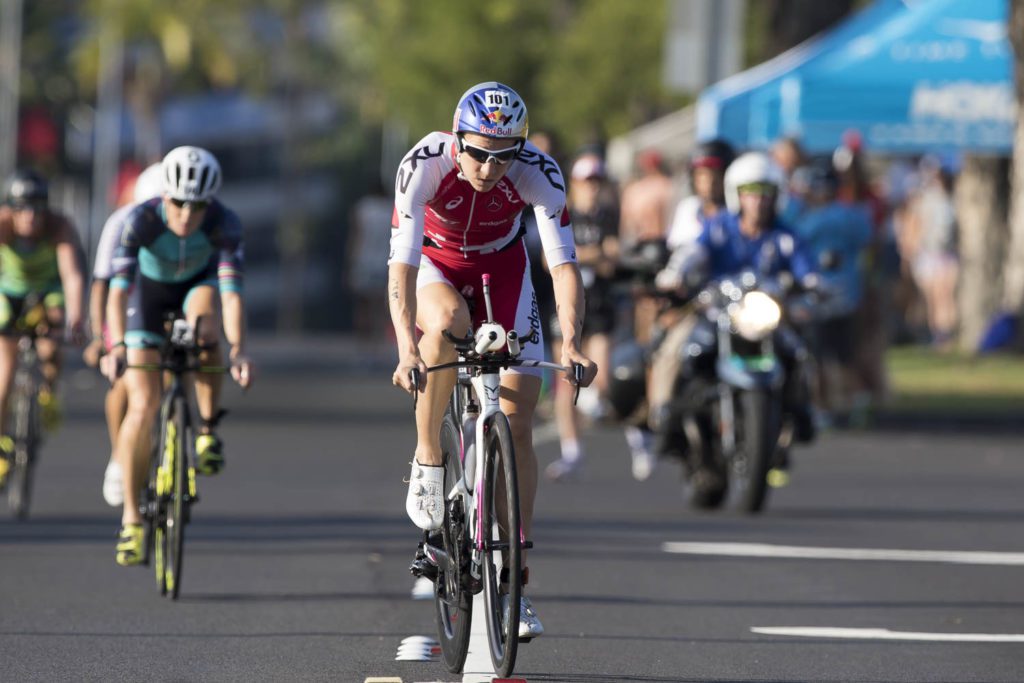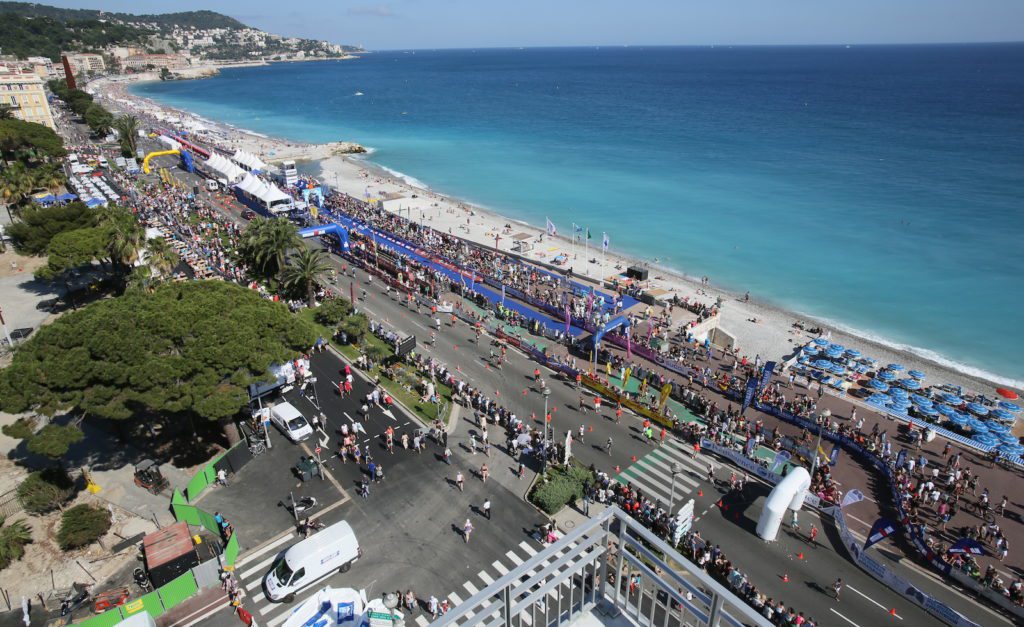Making sure you have the proper tire pressure is one of those easy tasks that often gets neglected before a race. It’s not the most glorious part of setting up your bike for a workout or race, but it can have a significant impact. It’s one of those tasks that if you don’t get right, it could result in a DNF.
You can’t just top up your tires to 120 psi and let them sit for the year. In any given triathlon season, you’re constantly letting air in and out of your tubes. You do it when you pack your bike up for vacations and before races. The pressure in your tire will also change based on the road conditions.
The risk of not knowing your tire pressure
A flat is not catastrophic, but when it comes to nailing that season end ‘A’ race or the Ironman you’ve spent months training for, a flat can leave a sour taste in your mouth as you try to come to terms with what could’ve been. This makes measuring accurate tire pressure before you ride an important part of getting the most out of your tires, and your entire bike.

Granted, flats are inevitable, but the solution is not topping your tubes out at 120. Even if you’re carrying a bit of extra weight after the winter, tires that are hard as stone aren’t the way to go. Being oblivious to your tire pressure isn’t going to help you out either. “The more you weigh, the more tire pressure you need to help prevent pinch flats,” says Nigel Gray, a former professional triathlete and head coach at Nigel Gray Performance Training. “But it’s still generally less than most people think.”
The reward of knowing your pressure for every ride and race
I know I’ve been guilty of maxing out my tires because I thought a harder tire meant a faster ride, but to my surprise, it doesn’t. The technology built into today’s bikes, wheels and rims greatly improve your ride, so you can afford to run a lower tire pressure. “Tires, wheels and rims are being designed around wider tires (25mm and 28mm) as they are faster from a rolling resistance standpoint, far superior from a comfort standpoint and generally not a big aerodynamic penalty to be paid,” says Gray.
The reward of nailing the ideal pressure in your tires is a smoother ride, lower rolling resistance and better traction in less than ideal conditions. You monitor your training and nutrition, shouldn’t you do the same with your equipment? Using the Quarq TyreWiz you’re able to do just that. Dial in the perfect pressure for your ride and get instantaneous feedback on your psi status.

Setting the tire pressure that’ll help you reach optimal performance
Monitoring your tire pressure and finding the perfect number that works for you is an art, just as much as it is a science. There’s no one size fits all. Several external factors come into play – body and bike weight, wheels, tire size, rim size, road surface and personal preference. Regardless, a triathlete that’s 5 ft 8 inches and 135 pounds, will not be running the same tire pressure as their 6 ft 4 inches and 200-pound counterpart.

This is where the TyreWiz and experimentation come into play. Thousands of hours have been put into searching and testing the perfect tire pressure. Unfortunately, it doesn’t really exist, as there are so many factors to consider. But with the Quarq TyreWiz, you can dial in the pressure that works for you, your bike, tires and road conditions for race day. By getting this number just right, you lower the rolling resistance between you and the road, helping you get from T1 to T2 faster.
Keeping an eye on your latex tubes
Latex tubes mean speed. They’re light and reduce the rotational resistance of spinning up your wheels as you crush another hill. Unfortunately, latex tubes aren’t as durable as your traditional clincher tube and they tend to seep air easily. “Latex tubes lose air over time, so you need to check them regularly in order to ensure you haven’t lost too much pressure,” says Gray. After a few rides, without even knowing it, you may be down a few psi and have to push a bit hard to go the same speed. Any changes in your tire pressure are easy to read with the Quarq TyreWiz app, saving you those few extra watts.
Every triathletes worst nightmare
Your negligence can be costly, too. Let me paint a picture for you. The day before your first Ironman, you drop off your bike during the pre-race check-in. It’s somewhat hot, but you think nothing of it. Your bike sits outside all day. Pop! It’s the worst feeling, getting to T1 to find your tire has blown.

Now, with the technology built into the Quarq TryeWiz valve and app, you can receive instantaneous feedback on your tire pressure. By setting preset high and low values, you will receive notifications on your phone and cycling computer (Bluetooth and ANT+ enabled) if the pressure in your tire changes dramatically.
With the Quarq TyreWiz, you’ll never not know what psi you’re running.
